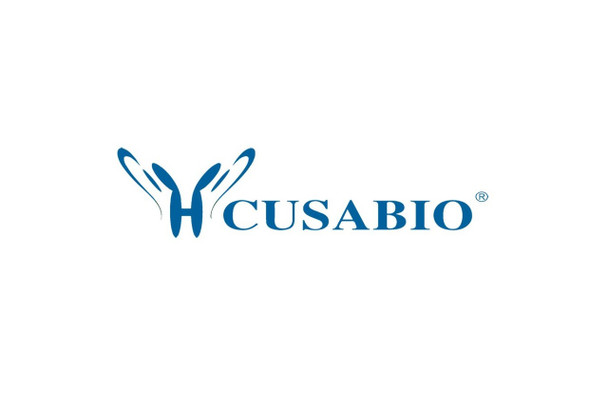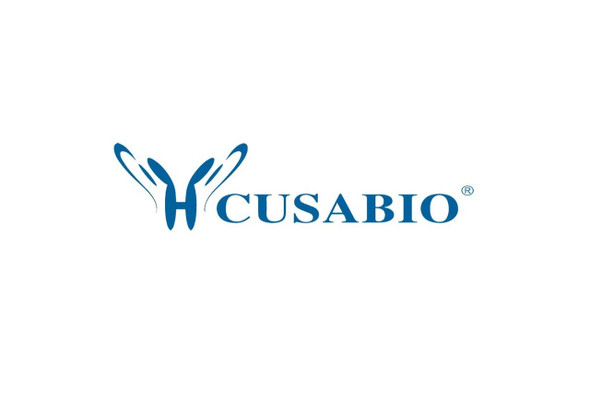Cusabio Virus & Bacteria Recombinants
Recombinant Enterobacteria phage M13 Attachment protein G3P (III) | CSB-YP303116ECY
- SKU:
- CSB-YP303116ECY
- Availability:
- 3 - 7 Working Days
Description
Recombinant Enterobacteria phage M13 Attachment protein G3P (III) | CSB-YP303116ECY | Cusabio
Alternative Name(s): Gene 3 protein Short name: G3P Minor coat protein
Gene Names: III
Research Areas: Others
Organism: Enterobacteria phage M13 (Bacteriophage M13)
AA Sequence: AETVESCLAKPHTENSFTNVWKDDKTLDRYANYEGCLWNATGVVVCTGDETQCYGTWVPIGLAIPENEGGGSEGGGSEGGGSEGGGTKPPEYGDTPIPGYTYINPLDGTYPPGTEQNPANPNPSLEESQPLNTFMFQNNRFRNRQGALTVYTGTVTQGTDPVKTYYQYTPVSSKAMYDAYWNGKFRDCAFHSGFNEDPFVCEYQGQSSDLPQPPVNAGGGSGGGSGGGSEGGGSEGGGSEGGGSEGGGSGGGSGSGDFDYEKMANANKGAMTENADENALQSDAKGKLDSVATDYGAAIDGFIGDVSGLANGNGATGDFAGSNSQMAQVGDGDNSPLMNNFRQYLPSLPQSVECRPFVFSAGKPYEFSIDCDKINLFRGVFAFLLYVATFMYVFSTFANILRNKES
Source: Yeast
Tag Info: N-terminal 6xHis-tagged
Expression Region: 19-424aa
Sequence Info: Full Length of Mature Protein
MW: 44.6 kDa
Purity: Greater than 90% as determined by SDS-PAGE.
Relevance: Plays essential roles both in the penetration of the viral genome into the bacterial host via pilus retraction and in the extrusion process. During the initial step of infection, G3P mediates adsorption of the phage to its primary receptor, the tip of host F-pilus. Subsequent interaction with the host entry receptor tolA induces penetration of the viral DNA into the host cytoplasm. In the extrusion process, G3P mediates the release of the membrane-anchored virion from the cell via its C-terminal domain.
Reference: "Filamentous phage infection: crystal structure of g3p in complex with its coreceptor, the C-terminal domain of TolA."Lubkowski J., Hennecke F., Plueckthun A., Wlodawer A.Structure 7:711-722(1999)
Storage: The shelf life is related to many factors, storage state, buffer ingredients, storage temperature and the stability of the protein itself. Generally, the shelf life of liquid form is 6 months at -20?/-80?. The shelf life of lyophilized form is 12 months at -20?/-80?.
Notes: Repeated freezing and thawing is not recommended. Store working aliquots at 4? for up to one week.
Function: Plays essential roles both in the penetration of the viral genome into the bacterial host via pilus retraction and in the extrusion process. During the initial step of infection, G3P mediates adsorption of the phage to its primary receptor, the tip of host F-pilus. Subsequent interaction with the host entry receptor tolA induces penetration of the viral DNA into the host cytoplasm. In the extrusion process, G3P mediates the release of the membrane-anchored virion from the cell via its C-terminal domain.
Involvement in disease:
Subcellular Location: Virion, Host membrane, Single-pass type I membrane protein
Protein Families: Inovirus G3P protein family
Tissue Specificity:
Paythway:
Form: Liquid or Lyophilized powder
Buffer: If the delivery form is liquid, the default storage buffer is Tris/PBS-based buffer, 5%-50% glycerol. If the delivery form is lyophilized powder, the buffer before lyophilization is Tris/PBS-based buffer, 6% Trehalose, pH 8.0.
Reconstitution: We recommend that this vial be briefly centrifuged prior to opening to bring the contents to the bottom. Please reconstitute protein in deionized sterile water to a concentration of 0.1-1.0 mg/mL.We recommend to add 5-50% of glycerol (final concentration) and aliquot for long-term storage at -20?/-80?. Our default final concentration of glycerol is 50%. Customers could use it as reference.
Uniprot ID: P69168
HGNC Database Link: N/A
UniGene Database Link: N/A
KEGG Database Link: KEGG
STRING Database Link: N/A
OMIM Database Link: N/A










